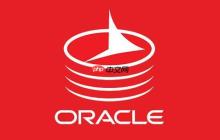-

- Oracle怎样修改表字段的小数位 Oracle修改字段小数位的实用指南
- 要修改Oracle表字段的小数位,需使用ALTERTABLE语句调整字段的数据类型,具体步骤如下:1.备份数据,防止操作过程中出现数据丢失;2.若直接修改字段类型(如将NUMBER(10,2)改为NUMBER(10,4)),需确保不会导致数据截断或溢出;3.遇到ORA-01440错误时,可选择清空字段数据后修改、创建新字段迁移数据或使用中间表导出导入;4.对于大表,推荐使用在线重定义(DBMS_REDEFINITION)以减少锁表影响,也可采用分区表逐个修改或滚动发布策略;5.修改完成后,务必检
- Oracle . 数据库 1081 2025-06-23 10:06:02
-

- Oracle如何删除表的外键约束 Oracle删除外键约束的简便操作教程
- 要删除Oracle表的外键约束,需使用ALTERTABLE语句并指定DROPCONSTRAINT子句,并可通过查询数据字典视图获取外键名称。1.使用ALTERTABLEemployeesDROPCONSTRAINTFK_DEPT_ID语句删除指定外键;2.若不知外键名,可通过SELECTconstraint_nameFROMuser_constraintsWHEREtable_name='EMPLOYEES'ANDconstraint_type='R'查询获得;3.删除后employees表的d
- Oracle . 数据库 1035 2025-06-21 19:09:02
-

- Oracle如何清空表中的所有数据 Oracle清空表数据的几种高效方式
- 清空Oracle表数据有三种主要方法:1.TRUNCATETABLE,速度快但无法回滚且需较高权限;2.DELETEFROMTABLE,可回滚且支持条件删除但较慢;3.DROPTABLE后重建,最彻底但丢失所有元数据。选择方式取决于需求:快速清空且无需回滚用TRUNCATE,需部分删除或回滚用DELETE,需重置结构用DROP加CREATE;此外,TRUNCATE会重置自增序列,可通过查询最大值并修改序列起始值恢复。
- Oracle . 数据库 772 2025-06-21 18:00:02
-

- Oracle怎样查看表的所有字段信息 Oracle查看表字段信息的常用命令分享
- 要查看Oracle表的所有字段信息,需查询数据字典视图。1.使用USER_TAB_COLUMNS可查看当前用户拥有的表字段信息;2.使用ALL_TAB_COLUMNS可查看当前用户有权限访问的所有表的字段信息;3.使用DBA_TAB_COLUMNS可查看数据库中所有表的字段信息,但需DBA权限。此外,可通过查询USER_TABLES、ALL_TABLES或DBA_TABLES确认表是否存在。除字段名、数据类型、长度外,还可获取默认值、是否允许为空、字段顺序及注释等信息。通过PL/SQL也可动态生
- Oracle . 数据库 1118 2025-06-20 15:30:02
-

- Oracle如何给表添加LOB字段 Oracle添加LOB字段的详细操作教程
- 在Oracle中添加LOB字段需使用ALTERTABLE语句,核心步骤包括:1.使用ADD子句添加BLOB或CLOB字段;2.根据数据类型选择BLOB或CLOB,BLOB用于二进制数据,CLOB用于字符数据,且CLOB会进行字符集转换;3.优化存储和性能,如指定独立的表空间、使用SECUREFILE、设置CHUNK和启用CACHE;4.更新现有数据时使用EMPTY_BLOB()初始化并结合DBMS_LOB包导入文件。例如,添加PDF_CONTENT字段可使用ALTERTABLEDOCUMENTS
- Oracle . 数据库 427 2025-06-20 11:42:57
-

- Oracle如何重命名表的列名 Oracle重命名表列名的简单操作指南
- 重命名Oracle表列名需用ALTERTABLE语句,语法为ALTERTABLE表名RENAMECOLUMN旧列名TO新列名;执行前应备份数据以防出错;修改后需同步更新所有涉及该列的视图、存储过程、函数及应用程序代码;动态SQL和硬编码列名的应用受影响较大,需全面排查;除ALTERTABLE外,还可通过新增列迁移数据或创建视图映射旧列名实现间接重命名,但各有性能与维护成本上的权衡;为降低风险,应在设计阶段规范列名,避免缩写,同时在变更前进行影响评估、测试验证、团队通知及上线后系统监控。
- Oracle . 数据库 1158 2025-06-19 14:27:02
-

- Oracle如何给表添加虚拟列 Oracle添加虚拟列的步骤和注意事项
- Oracle中添加虚拟列的方法是使用ALTERTABLE语句配合ADD和GENERATEDALWAYSAS子句。具体操作为:1.使用ALTERTABLEemployeesADD语句;2.定义虚拟列full_name的数据类型VARCHAR2(100);3.使用GENERATEDALWAYSAS指定计算表达式(first_name||''||last_name);4.添加VIRTUAL关键字显式声明该列为虚拟列。虚拟列不实际存储数据,查询时动态计算值,适用于报表统计与数据分析场景,但复杂表达式或大
- Oracle . 数据库 874 2025-06-19 13:51:01
-

- Oracle怎样创建表的外键关系 Oracle创建外键关系的详细步骤解析
- 在Oracle中创建表的外键关系有两种方式:创建表时定义或创建后添加。1.创建表时定义外键语法为CREATETABLE子表名(列定义,CONSTRAINT约束名FOREIGNKEY(外键列)REFERENCES父表名(父表列)[ONDELETECASCADE][ONUPDATECASCADE]);2.表创建后添加外键使用ALTERTABLE子表名ADDCONSTRAINT约束名FOREIGNKEY(外键列)REFERENCES父表名(父表列)[ONDELETECASCADE];外键约束的ONDE
- Oracle . 数据库 480 2025-06-18 15:24:02
-

- Oracle如何给表添加触发器 Oracle添加触发器的完整操作流程
- 添加Oracle表触发器的方法包括明确目的、选择时机、编写代码和创建触发器。1.明确触发器的目的,如记录变更或数据校验;2.选择触发时机,如BEFORE/AFTERINSERT/UPDATE/DELETE;3.用PL/SQL编写逻辑;4.使用CREATETRIGGER语句创建。为避免性能问题,应简化逻辑、避免DML操作、使用条件判断。触发器优点是自动化、数据一致性和审计跟踪,缺点是性能影响、维护困难和调试不便,适用于审计、校验、同步和业务规则执行。禁用或启用触发器可用ALTERTRIGGERDI
- Oracle . 数据库 987 2025-06-18 13:57:01
-

- oracle怎么让三个值都替换成
- 在Oracle数据库中,可以使用嵌套的REPLACE函数或REGEXP_REPLACE函数来替换三个不同的值为同一个新值。1)使用嵌套的REPLACE函数:SELECTREPLACE(REPLACE(REPLACE(column_name,'old_value1','new_value'),'old_value2','new_value'),'old_value3','new_value')FROMtable_name。2)使用REGEXP_REPLACE函数:SELECTREGEXP_REPL
- Oracle . 数据库 545 2025-06-17 12:42:02
-

- Oracle怎样删除表的物化视图 Oracle删除物化视图的快速实现方法
- 要删除Oracle表的物化视图,首先使用DROPMATERIALIZEDVIEW命令进行删除,但需注意物化视图与基表的关系及其依赖对象。1.确认物化视图存在:通过查询USER_MVIEWS、ALL_MVIEWS或DBA_MVIEWS视图验证目标物化视图是否存在;2.执行删除操作:使用DROPMATERIALIZEDVIEWYOUR_MATERIALIZED_VIEW_NAME命令删除,若存在依赖对象可加CASCADECONSTRAINTS选项强制删除,但需谨慎使用;3.验证删除结果:再次查询数据
- Oracle . 数据库 688 2025-06-17 10:15:01
-

- Oracle怎样修改表的分区键 Oracle修改表分区键的配置指南
- Oracle表的分区键无法直接修改,必须通过创建新表、迁移数据等步骤实现。1.创建新表:定义新的分区键结构;2.数据迁移:使用INSERT或DBMS_REDEFINITION减少停机时间;3.验证数据一致性;4.重命名表替换原表;5.重建索引与约束;6.验证应用程序兼容性。修改分区键需重新分布数据,可能导致性能下降并影响SQL查询逻辑。采用DBMS_REDEFINITION可在线重定义,具备减少停机、资源消耗及简化操作等优势,但不支持LONG列等限制。修改后优化查询的方法包括调整SQL语句以利用
- Oracle . 数据库 402 2025-06-14 11:30:03
-

- oracle怎么到处一张表的数据库
- 在Oracle中导出一张表的数据库可以使用DataPump或SQLPlus。1.DataPump适合大数据量导出,需预设目录并配置权限。2.SQLPlus适用于生成CSV文件,便于数据分析和共享。选择合适的方法可提高效率并避免常见问题。
- Oracle . 数据库 822 2025-06-14 09:06:01
-

- Oracle怎样修改表字段的加密属性 Oracle修改字段加密属性的实用指南
- 修改Oracle表字段的加密属性需按步骤进行并评估影响。首先,明确业务需求和加密算法选择;其次,在测试环境中进行性能测试;第三,处理数据迁移问题;第四,确保符合合规性要求;第五,验证加密是否生效及应用程序访问能力。常见错误包括未备份数据、权限不足、SQL语法错误等,应逐一检查并解决。通过查询数据字典视图验证字段加密状态,并测试应用程序功能与系统性能,确保加密正确实施且不影响正常操作。
- Oracle . 数据库 682 2025-06-13 11:51:06
-

- Oracle怎样修改表字段的精度 Oracle修改字段精度的详细步骤解析
- 修改Oracle表字段精度需谨慎操作以避免数据丢失或性能问题。1.修改字段精度前必须备份数据,可使用expdp导出或创建备份表;2.根据需求确定是扩大还是缩小精度,以及涉及的数据类型;3.若为扩大精度且无数据风险,可直接使用ALTERTABLEMODIFY语句;4.若为缩小精度或变更类型,则应采用间接方法:新增临时字段、复制并转换数据、删除原字段、重命名新字段;5.修改完成后需验证数据完整性与准确性;6.对于NUMBER类型,修改前应检查数据范围,必要时使用ROUND或TRUNCATE函数减少误
- Oracle . 数据库 632 2025-06-13 10:06:02

PHP讨论组
组员:3305人话题:1500
PHP一种被广泛应用的开放源代码的多用途脚本语言,和其他技术相比,php本身开源免费; 可以将程序嵌入于HTML中去执行, 执行效率比完全生成htmL标记的CGI要高许多,它运行在服务器端,消耗的系统资源相当少,具有跨平台强、效率高的特性,而且php支持几乎所有流行的数据库以及操作系统,最重要的是





























